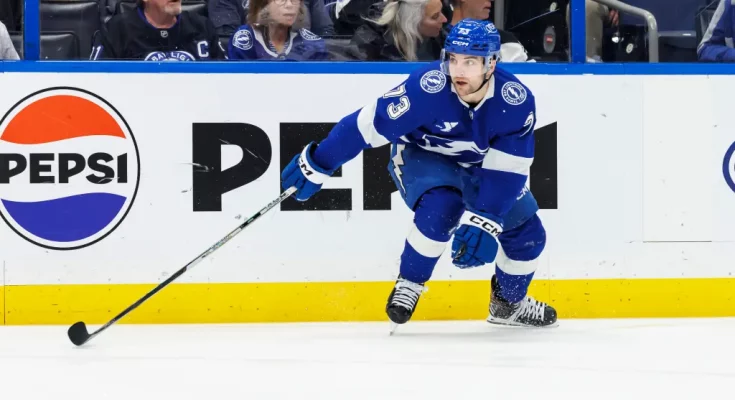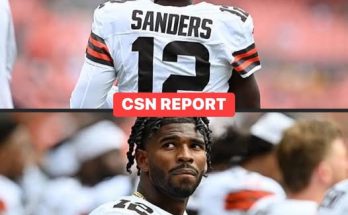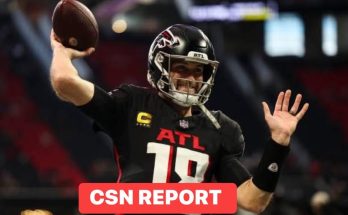The New York Rangers have made a calculated, low-risk, potentially high-reward move by signing veteran forward Conor Sheary to a professional tryout (PTO) as the team inches closer to training camp. For Sheary, this is a critical opportunity to not only continue his NHL career but to prove he still has enough left in the tank to make an impact on a contending team. For the Rangers, the decision to bring in Sheary reflects a broader strategy—one where depth, experience, and salary cap flexibility are all in play as the team looks to take that elusive next step toward a Stanley Cup championship. It also signals a commitment to internal competition and leaves the door open for surprise contributors to force their way into the roster discussion.
At 32 years old, Conor Sheary is not a stranger to proving himself. Undrafted out of UMass Amherst, Sheary broke into the NHL with the Pittsburgh Penguins and quickly carved out a niche for himself as a speedy, versatile winger with offensive upside and a knack for timely scoring. His rise was rapid—he was part of the Penguins’ back-to-back Stanley Cup championship teams in 2016 and 2017, often playing alongside Sidney Crosby. Those runs helped Sheary build a reputation as a smart, opportunistic player who could complement top talent and elevate his game in high-pressure moments. Now several years removed from those championship runs, Sheary is looking to show that he can still contribute meaningfully on a team with serious playoff aspirations.
Over the past few seasons, Sheary has quietly remained a productive player in the NHL, even if he hasn’t always occupied the spotlight. Last season with the Tampa Bay Lightning, he played 57 games and registered 15 points—a drop-off from his 2022-2023 campaign with the Washington Capitals, where he posted 37 points in 82 games. The dip in production has raised some questions about his long-term viability as a regular contributor, but it hasn’t erased his value as a veteran presence or as someone who can be slotted into various roles depending on need. Sheary brings with him over 500 games of NHL experience and a skill set tailored for modern, up-tempo hockey—speed, quick decision-making, and an ability to pressure pucks and create chaos in the offensive zone.
For the Rangers, Sheary’s PTO fits into a broader context. Under new head coach Peter Laviolette last season, the Rangers established themselves once again as a regular-season powerhouse, but their playoff shortcomings—especially in terms of offensive depth—were on full display. The team continues to boast high-end talent in players like Artemi Panarin, Mika Zibanejad, Chris Kreider, and Adam Fox, but secondary scoring remains a question mark. That’s where Sheary could potentially factor in. He may not be a game-breaker, but he is the type of player who can slide up and down the lineup, contribute on the penalty kill, and add offensive spark in bottom-six minutes.
There’s also a financial angle to this move. The Rangers, like many NHL teams, are operating under tight salary cap constraints. Signing Sheary to a PTO means there’s no commitment beyond camp—he’ll have to earn his place. But if he does, and if the team offers him a contract afterward, it’s likely to be a league-minimum or low-cost deal, making it an appealing option for a team trying to stretch every dollar. This is also not the first time the Rangers have explored value on the fringes; recent seasons have seen the team give opportunities to players like Jimmy Vesey, Tyler Pitlick, and Barclay Goodrow, all of whom have played various roles and helped stabilize the roster. Sheary, with a higher offensive ceiling than some of those names, could be a more dynamic version of that type of player.
From Sheary’s perspective, the Rangers offer a compelling opportunity. This is a team that made the Eastern Conference Finals just two seasons ago and remains in the contender conversation. The chance to potentially play alongside elite players and contribute on a meaningful stage is undoubtedly appealing. Additionally, Madison Square Garden’s stage and New York’s hockey market provide an incentive for any veteran looking to revive or prolong his career. If Sheary can impress during training camp—both with his on-ice performance and his ability to integrate into the team’s culture and systems—there’s a very real path for him to make the roster, particularly if injuries arise or younger players fail to grab hold of roles during preseason.
Training camp competition will be stiff. The Rangers are rich in young talent—names like Brennan Othmann, Will Cuylle, and Adam Sykora will be pushing hard for NHL spots, while established players like Vesey, Goodrow, and Kaapo Kakko are looking to lock down consistent minutes. But that’s the beauty of a PTO. It allows a player like Sheary to throw his hat in the ring with nothing guaranteed, betting on himself and his body of work to open eyes and earn trust. For a team looking to fine-tune its roster ahead of what it hopes will be a deep playoff run, these kinds of tryouts can yield real dividends.
It’s worth noting that Sheary’s playoff experience is something the Rangers front office will value. In a sport where small margins define championship success, players who have been through the rigors of a long postseason are assets. Sheary not only owns two Stanley Cups, but he’s also played in 73 playoff games and knows what it takes to win in hostile environments against elite competition. While he may not be the flashiest name or the biggest offseason acquisition, his presence in camp will set a tone—especially for younger players learning what it means to prepare like a pro.
Another intriguing layer to this move is how it underscores a shift in NHL roster-building philosophy. Once upon a time, PTOs were rare and often considered desperate moves. Today, they’re smart, strategic, and increasingly common as teams manage cap space, embrace performance-based evaluations, and seek to maximize every position. The PTO path allows teams to vet veterans up close without obligation, while offering players a platform to audition for roles league-wide. Even if Sheary doesn’t crack the Rangers’ final roster, a strong camp could land him a job elsewhere—perhaps with a team looking for an experienced winger before the season starts.
There’s also the intangible value Sheary brings. He has always been known as a high-character player, someone who works hard, communicates well, and keeps things professional even when things don’t go his way. Coaches appreciate that. Teammates respect that. It’s those behind-the-scenes traits that can help a team navigate the long grind of an NHL season. With the Rangers poised for another playoff push, adding a reliable locker room voice—especially one who has already hoisted the Cup twice—could be an underrated win.
While no one is predicting Sheary will return to the 50-point level or crack the Rangers’ top six out of the gate, his chances shouldn’t be dismissed either. He has a track record of surprising people, of taking advantage of opportunities when presented, and of showing up in big moments. With preseason games providing him a stage to show what he’s still capable of, there’s every chance that Conor Sheary could go from PTO to important piece in a relatively short time.
Of course, this all depends on how he looks in camp—how he skates, how he reads Laviolette’s systems, how he meshes with potential linemates, and how he handles both offensive and defensive responsibilities. One or two standout performances in preseason could tip the scales. So could an injury to a roster regular. The NHL season is long and often unpredictable. Depth wins championships, and having an extra option like Sheary waiting in the wings is smart business.
As the Rangers prepare to enter what they hope will be a defining year, their offseason moves have focused on refining the margins, adding competitive depth, and reinforcing the kind of internal pressure that makes teams better. Conor Sheary’s presence in camp exemplifies that approach. He’s a veteran, a winner, a player with just enough left to make a difference—and perhaps even surprise a few people along the way. For Sheary, this isn’t just another tryout. It’s a shot to reassert himself on a big stage. For the Rangers, it’s a low-risk move that could pay dividends in April, May, and beyond. In today’s NHL, those are exactly the kinds of bets that matter.



